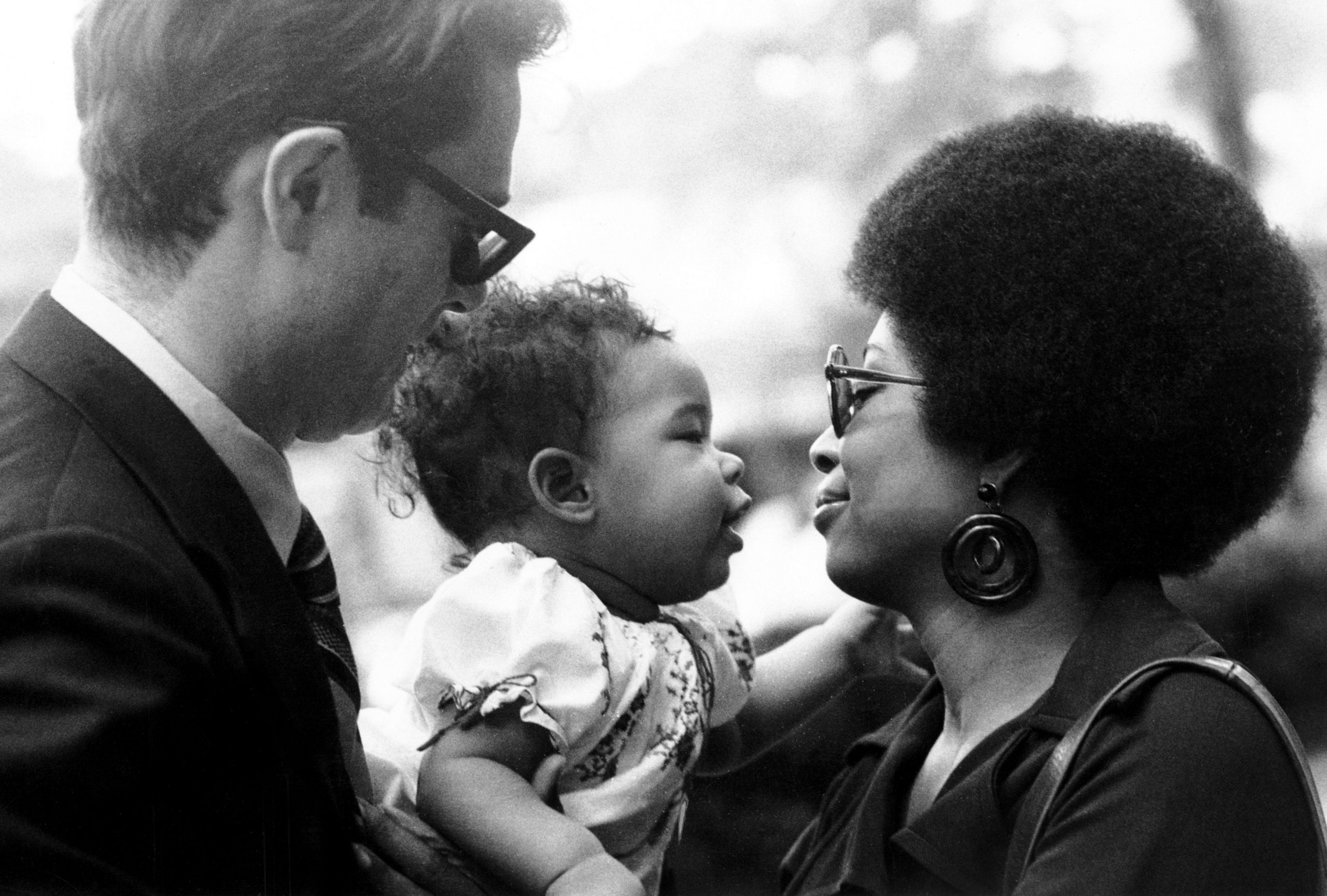Why Male Allyship Matters in the Workplace
Discrimination at work harms women, businesses, and society. Leadership coach Carley Hauck shares nine tangible ways that men can acknowledge this imbalance, show up for female coworkers and those from marginalized groups, and become a male ally in moving...

The COVID-19 pandemic has disrupted our work lives, particularly for women. As of January 2021, over 2.3 million women had left the workforce in the US during the pandemic, leaving only 57% of women working or looking for work—the lowest rate since 1988. The pandemic seems to be setting back many of the gains that those who identify as women have made in the workplace in the past several decades.
This hurts women, businesses, and society. According to a 2012 study of 1,500 companies, “female representation in top management leads to an increase of $42 million in firm value.” Female leaders seem to be particularly important for companies thriving on innovation. Notably, the more women occupy a company’s C-suite and corporate boards, the better its sustainability and corporate social responsibility initiatives.
One pathway toward creating a culture of diversity and belonging is to empower allies at work.
One pathway toward creating a culture of diversity and belonging is to empower allies at work. An ally is someone who is not a member of an underrepresented group but who holds a position of privilege and power and can advocate and take action to support that less represented group, without taking over their voice. Research suggests that when marginalized group members have coworker allies, they have increased job satisfaction, lower anxiety, and a stronger workplace commitment. As women make their way in a post-COVID work world, male allies can help advocate that their voices are heard and that commitments to equity and inclusion are taken seriously.
What Is Male Allyship?
To address bias against women at work, and have brave conversations about topics such as equal pay and equitable hiring and promotion, men who hold positions of power—normally white, cisgendered men—need to use their influence, knowledge, and resources to support folks who identify as women, people of color, and marginalized communities. Allyship is important in making sure that everyone is not only invited to the table but is also heard, acknowledged, and recognized for their contributions.
Being an ally is by no means easy. Would-be male allies may struggle to identify subtle forms of sexism or exclusion at work and fear backlash when they speak out. Research suggests that men may be unsure how to be an ally and have trouble navigating power dynamics at work. But a commitment to equity, as well as support from other men, can help motivate men to act as allies.
When men speak up on behalf of women, they’re more likely to be taken seriously by other men. As a result, women who have experienced sexism or oppression feel more confident and empowered. According to a new study, women who believe they have strong allies at work feel a greater sense of inclusion and more energy and enthusiasm on the job.
Below are some suggestions for how to be an ally to women, and how to create a broader workplace culture that welcomes allyship. These recommendations are based on my personal and professional observations and the countless interviews I conducted with folks on this topic while researching my new book Shine. I also share stories from several inspiring male allies (and friends) who I interviewed on this topic on my podcast.
9 Ways to Be a Male Ally
If you’re a man (and particularly if you hold a position of power) within an organization, and you recognize you can influence the work culture for the better, here are some best practices.
1) Declare yourself a male ally to yourself and your team.
Vince Guglielmetti, Intel’s vice president of the Americas general manufacturing operations, has publicly claimed to be a male ally with his leadership team and in direct reports. He sees himself as having a balance of masculine and feminine qualities. “I am my mother’s son,” he often says. Intel has a commitment to hire 40% women in technology fields by 2022/2023. Intel has created a framework that builds a pipeline for new hires, retains people, and promotes inclusive leadership.
2) Be mindful of your bias and embrace a growth mindset.
Brian McComak, who is a diversity and inclusion consultant with over 20 years of experience in human resources, sees allyship as grounded in the awareness of privilege.
“What the concept of male allyship does, in my mind, is centers an understanding of the experience of men and the privilege of men in our society. The key element of it is having an awareness of how that identity shapes how I get to experience the world and how I use that identity to make a difference,” says McComak.
Research suggests that teaching men to reflect on their privileges and encouraging awareness increases men’s sensitivity to and willingness to confront sexism.
3) Go to the source.
Ask women, nonbinary people, people of color, and other less dominant groups how you can help. Do they need sponsorship, mentorship? More learning opportunities? Something else? Ask how you can support them. For example, you might share your social capital through information and knowledge, or your influence through organizational resources, invitations, and introductions.
In his role as an ally, Guglielmetti is straightforward, asking women, people of color, and LGBTQIA+ people, “I know you need my voice. How can I be your voice?”
4) Cultivate supportive partnerships with women and less dominant groups.
“I think of [male allyship] as the lifelong process of building relationships based on trust, consistency, and accountability with marginalized people,” says Willie Jackson, head of learning and development at ReadySet, a consulting firm specializing in making more equitable, diverse, and inclusive work environments.
Over time, relationships like this allow you to gain an understanding of perspectives, life experiences, and identities that are different from your own.
5) Speak up and “call in” other people if you see them abusing their power with others.
As an ally, you can hold conscious or unconscious acts of hurt, exclusion, or harm accountable, also known as microaggressions. Stating what you see happening and taking just action are key to change. Silence is complicity and only perpetuates the cycle.
For example, Guglielmetti challenges and speaks directly to microaggressions and recruits other male leaders to take on male allyship roles and lend their voices to disenfranchised minorities. Research suggests that allyship is more empowering for women when men act out of a belief in equity, rather than the paternalistic idea that men should protect women.
6) Step back so others can step forward.
Kyle Grubman is a principal learning and development partner at LinkedIn. When he is asked to work on a project or has the opportunity to volunteer, he considers whether saying no to the opportunity might allow someone else to take it on, someone who wouldn’t normally get asked.
Similarly, when Jackson is asked to speak at an event, he sometimes suggests women to speak in his place. He also tries to “take up less space” in meetings, speaking less and welcoming more women’s perspectives.
7) Model different ways of being.
Instead of conforming to masculine norms in the workplace, where people are expected to be aggressive and unemotional, Jackson tries to show up with more gentleness, empathy, and vulnerability at work, which hopefully allows women and other folks to do the same. “That gives them permission to do so as well, and subconsciously signals that they don’t need to perform or show up in a particular way in order to engage with me, in order to seem credible,” he says.
8) Be mindful of the way you communicate.
Realizing the ways that bias can creep into language and conversations, Jackson acknowledges the potential impact of his words and tries to invite discussion and feedback. Before expressing an opinion, for example, he might say, “Not to mansplain this, or you might know this better than I do…”
In his role as a leader, McComak acknowledges his fallibility and invites feedback from his teammates. “I want to be respectful. I want to be encouraging. I want to be supportive. And I also know that I’m going to get it wrong sometimes,” he says. So he tells his team: “I want to be open to hearing what you need to help me understand or see differently. And if I got something wrong, then I will apologize for it. . . You have that permission to challenge me, and I’m really grateful.”
9) Understand the impact your words or actions have caused in the past, take responsibility for them, and course-correct.
Grubman acknowledges that it can be difficult to work hard at being an ally and then receive feedback that your words or actions have hurt others. For example, at a workshop he organized where he actively tried to celebrate stories of all genders, he was told that the many sports analogies he used made it feel less inclusive. “It’s hard to sit with that feedback, but I know it’s good for me and I know it reveals blind spots,” he says. “It makes me better in the long run.”
How anyone can encourage male allyship at work
When we raise our expectations on matters of inclusion, we can have deeper conversations on this essential aspect of workplace culture. No matter your gender, here are some structural ways to encourage male allyship at your workplace:
Encourage and facilitate more positive professional interactions among men, women, and nonbinary people. Research suggests that the more positive interactions men have with women in workplace settings, the less prejudice and exclusion they tend to demonstrate. Invite men to attend discussions and events around gender equity in the workplace. This will make efforts to increase inclusion, diversity, and belonging more successful. Give men an important role to play in gender parity efforts. The motivation for this role can be tied to personal examples and a sense of fairness and justice. Many men want to support women, different races, and other less dominant groups, but don’t know how to step in and offer aid. This requires all people to ask men for what they need. Create a male allies group at work to understand, identify, and incorporate gender-supportive behaviors on the job and elsewhere. This can also be a space for men to gain encouragement and community from other male allies.Personally, I have learned the benefit of asking male leaders and mentors for sponsorship and mentorship in my life. I wouldn’t be where I am if I hadn’t had the courage to ask for the support of male allies.
To encourage the momentum of male allies, we can also acknowledge the men in our lives who have sponsored, mentored, and supported us in different ways. One simple way to do this is to reach out to these people to show your appreciation. We can also encourage men to challenge other men to be better: to be advocates for women, people of color, marginalized identities, and LGBTQ+ folks. We can encourage men to be vulnerable and showcase all of their emotions—sadness, anger, fear—by creating a culture that embraces a social contract of nonjudgment, psychological safety, and kindness. In this way, we can support a more wholesome version of manhood and of being human.
This article originally appeared on Greater Good, the online magazine of UC Berkeley’s Greater Good Science Center, one of Mindful’s partners. View the original article.
Can Mindfulness Help Us Dismantle Inequality?
The same mindfulness practices that transform problematic habits and thought patterns can help us tune in to the subtle ways that society cultivates barriers and “draws us to reinvest in segregation,” says mindful law expert Rhonda Magee. Read More
How Mindfulness Can Help us Talk About the Things That Divide Us
Mindful editor-in-chief Barry Boyce talks with writer and editor Stephanie Domet about how mindfulness helps us deepen our caring not only for ourselves, but also for others, no matter how different from us they may seem. And, we meet the Mindful Vulgarian, and talk a little about MOMing, also known as Mouthing off Mindfully. Read More
Turning Toward Collaborative Leadership
How a deep mindfulness practice helped Jessica Morey loosen the reins at Inward Bound Mindfulness Education, and empower the organization to adopt a new way to work. Read More

 Hollif
Hollif 

































